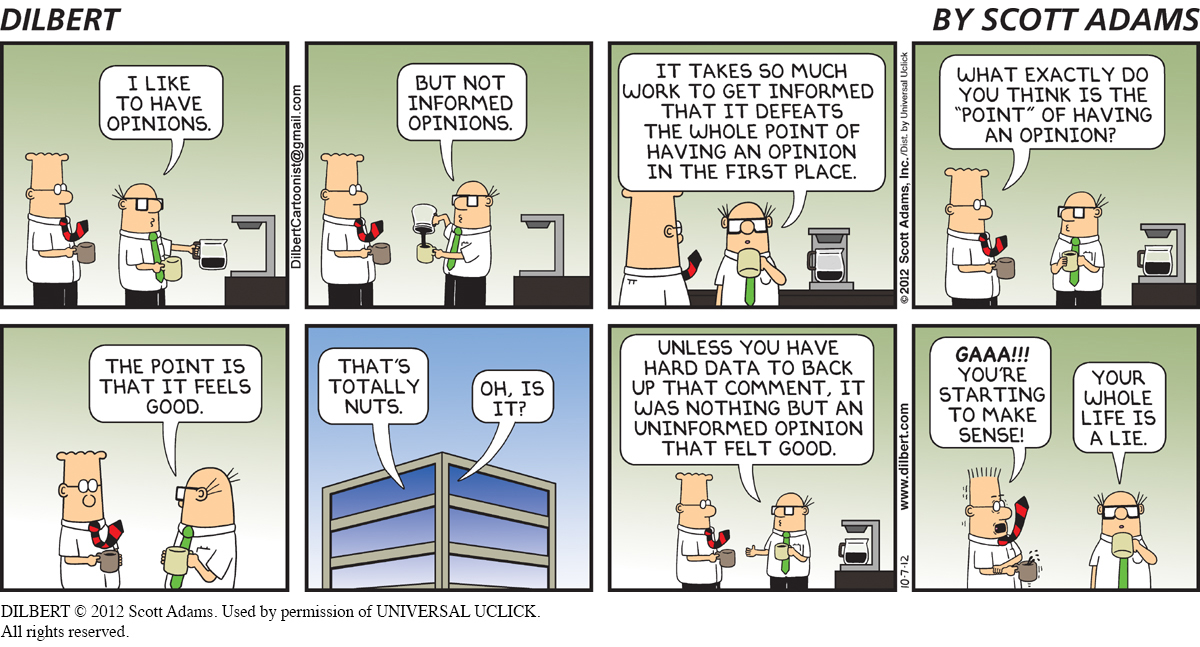4.4 WORKING WITH MULTIPLE SOURCES
Up to this point, we have been looking at how a single source can be used to inform an argument. But it is never wise to base our ideas on only one viewpoint, even if it’s from a credible source. If your goal is to develop an argument that is balanced and demonstrates your understanding of key issues involved, then you’ll consult a number of sources — probably several more than you actually use and cite in your argument. To think critically and argue persuasively, we need to learn everything we can about the issue, and listen to what others who are knowledgeable have to say, especially those who disagree with us or have an idea that’s never occurred to us. We call this process of analyzing multiple sources in order to develop a new viewpoint synthesis.


What is the difference between an opinion and an informed opinion? Think about a time when you changed your opinion. What caused the change? Was it reading another viewpoint, listening to someone whose opinion differed from yours, or maybe experiencing something that changed your perspective?
To practice this process, let’s look at a series of sources — a Conversation — on one subject, probably one you already have an opinion about: high school sports.
Using the following group of texts, we’ll examine this issue and develop an opinion that goes beyond a simple pro-
Each text you’ll read in this Conversation introduces ideas or issues you might not have considered. And in the process, your thinking about the issue will become more informed, nuanced, and sophisticated. Eventually, you will get a chance to share your view on the subject, and show readers which ideas from these readings shaped the way you think about this issue. Thus, you’ll be formulating an evidence-
Now let’s take a look at the readings on this topic. Note that the first article, by Amanda Ripley, is a bit longer than the others. It anchors our discussion on this issue because it was very controversial when it was published and stirred up a lot of reactions. In fact, two of the texts included here are direct responses that take issue with Ripley’s argument. The last two texts, both published earlier than Ripley’s essay, are relevant to the topic, though obviously neither is a direct response to her argument.
The synthesis process begins with careful reading and analysis—
Keeping those things in mind, let’s move on to examine the sources before we enter the Conversation on the role of sports in high schools.